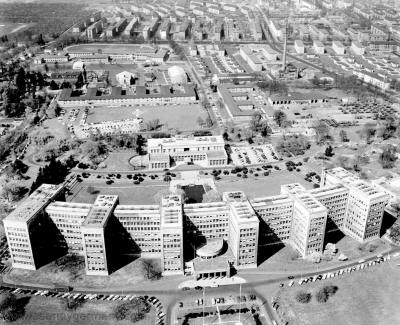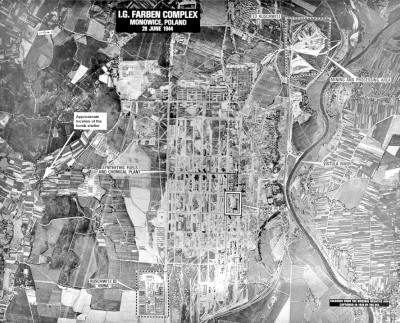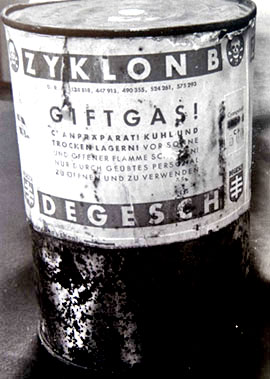|
from Wikipedia Website
Farben is German for "paints", "dyes", or "colors", and initially many of these companies produced dyes, but soon began to embrace more advanced chemistry.
The founding of IG Farben was a reaction to Germany's defeat in World War I.
IG Farben held a near total monopoly on chemical production, later during the National Socialist (Nazi) regime, including manufacturing Zyklon B poison for the gas chambers.
Before the war the dyestuff companies had
a near monopoly in the world market which they lost during the
conflict. One solution for regaining this position was a large
merger.
The IG Farben Building, headquarters for the conglomerate in Frankfurt am Main, Germany, was completed in 1931.
I.G. Farben Building,
Frankfurt a.M., 1959 or 1960
It also brought new evidence concerning complex price and marketing agreements between duPont, a major investor in and producer of leaded gasoline, U.S. Industrial Alcohol Co. and their subsidiary, Cuba Distilling Co.
The investigation was eventually
dropped, like dozens of others in many different kinds of
industries, due to the need to enlist industry support in the war
effort. However, the top directors of many oil companies agreed to
resign and oil industry stocks in molasses companies were sold off
as part of a compromise worked out.
At its peak in 1944, this factory made use of 83,000 forced laborers.
The pesticide Zyklon B, for which
IG Farben held the patent, was manufactured by Degesch (Deutsche
Gesellschaft für Schädlingsbekämpfung), which IG Farben had 42.2
percent (in shares) of and which had IG managers in its Managing
Committee.
Instead, in 1951, the company was split up into the original constituent companies.
The four largest quickly bought the
smaller ones, and today only Agfa, BASF, and Bayer
remain, while Hoechst merged with the French Rhône-Poulenc
Rorer to form Aventis, now based in Strasbourg, France.
The Chemagrow
Corporation employed German and American specialists for the
U.S. Army Chemical Corps. Dr. Otto Bayer was I.G. Farben's
research director. He developed and tested chemical warfare agents
with Dr. Gerhard Schrader.
During this lengthy period, the holding company had been continually criticized for failing to pay any compensation to the former laborers, which was the stated reason for its continued existence after 1952.
The company, in turn, blamed the ongoing legal disputes with the former captive laborers as being the reason it could not be legally dissolved and the remaining assets distributed as reparations.
Each year, the company's annual meeting
in Frankfurt was the site of demonstrations by hundreds of
protesters.
Degussa produced the anti-graffiti substance Protectosil used to cover the stelae which are the major element in the memorial.
The dispute arose mainly because Degussa had also owned 42.2 percent of the shares in Degesch, at the time when that company was producing Zyklon B.
The board of trustees of the memorial ultimately decided that, given the cost of eliminating Degussa's role in the project at that relatively late stage, the use of Protectosil ought to continue, despite protests from many Jewish groups.
|




